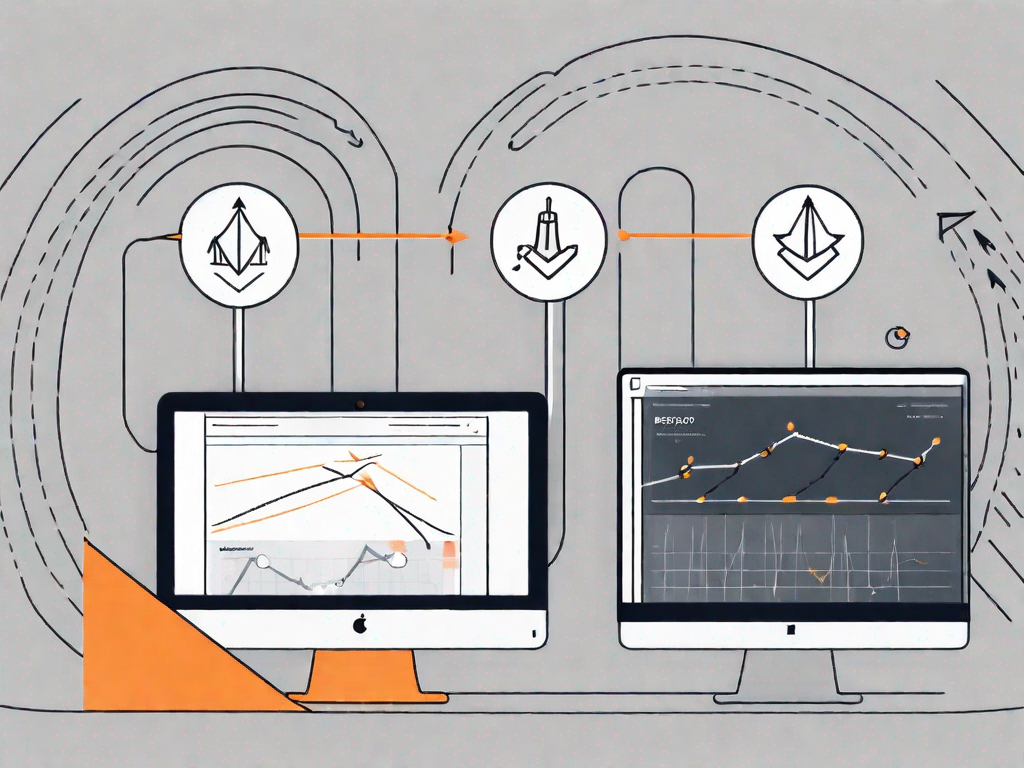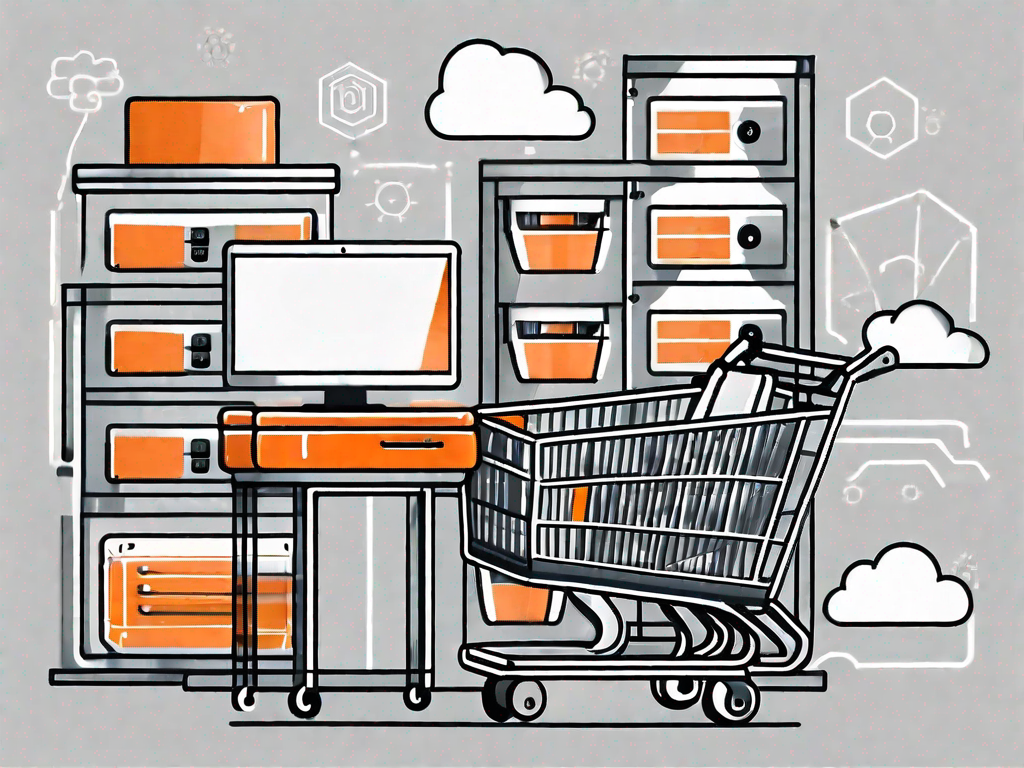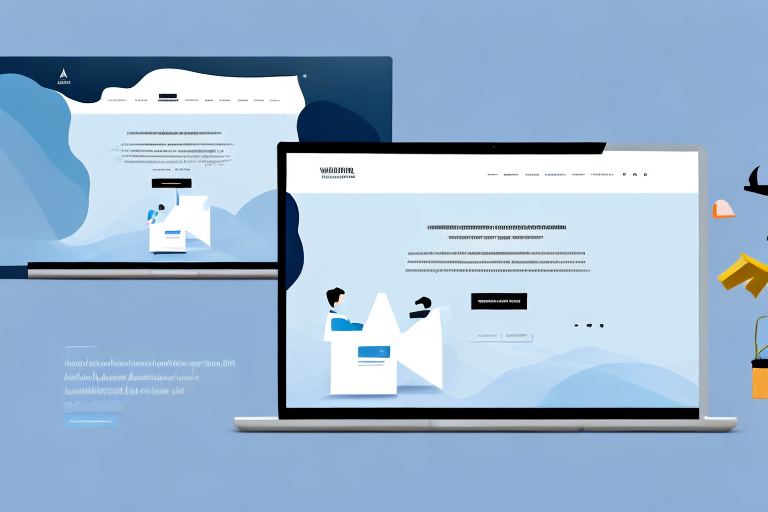.svg)
How to integrate Shopify with ShipBob
.svg)

In today's fast-paced e-commerce landscape, it is crucial for businesses to streamline their operations and enhance customer experience. One effective way to achieve this is by integrating Shopify, a popular e-commerce platform, with ShipBob, a leading third-party logistics provider. In this article, we will explore the basics of Shopify and ShipBob integration, discuss the importance of integrating these two platforms, and provide a step-by-step guide to help you seamlessly integrate Shopify with ShipBob. We will also address common integration issues and provide troubleshooting solutions.
Understanding the Basics of Shopify and ShipBob Integration
What is Shopify?
Shopify is an all-in-one e-commerce platform that allows businesses to create online stores, manage products and inventory, process payments, and track sales. With its user-friendly interface and extensive range of features, Shopify has become a go-to choice for entrepreneurs and small businesses looking to establish an online presence.
When it comes to building an online store, Shopify offers a wide range of templates and themes that can be customized to suit the brand and style of any business. From fashion retailers to food and beverage companies, Shopify provides a flexible and intuitive platform that can cater to various industries and niches.
Furthermore, Shopify provides businesses with the tools they need to manage their inventory effectively. With features such as inventory tracking, stock alerts, and automatic order fulfillment, businesses can ensure that they always have the right products in stock and can meet customer demands efficiently.
One of the key advantages of using Shopify is its seamless integration with various payment gateways. Whether businesses want to accept credit card payments, PayPal, or other alternative payment methods, Shopify offers a range of options to suit different customer preferences.
Moreover, Shopify provides businesses with comprehensive sales analytics and reporting tools. By tracking sales data, businesses can gain valuable insights into customer behavior, identify trends, and make informed decisions to optimize their online store's performance.
What is ShipBob?
ShipBob is a third-party logistics provider that specializes in helping e-commerce businesses store, pack, and ship their products to customers. With a network of strategically located fulfillment centers, ShipBob offers fast and affordable shipping solutions, helping businesses deliver orders efficiently and meet customer expectations.
When it comes to order fulfillment, ShipBob streamlines the process for businesses by handling inventory management, picking and packing orders, and shipping them directly to customers. By outsourcing these tasks to ShipBob, businesses can focus on other aspects of their operations, such as marketing and customer service.
ShipBob's strategically located fulfillment centers play a crucial role in ensuring fast and efficient shipping. By storing inventory in multiple locations, ShipBob can reduce shipping distances and transit times, resulting in quicker deliveries and improved customer satisfaction.
In addition to its fulfillment services, ShipBob provides businesses with advanced inventory management tools. Through its platform, businesses can track inventory levels in real-time, set up automatic reorder points, and receive alerts when stock is running low. This helps businesses avoid stockouts and ensures that they can fulfill customer orders without delay.
Furthermore, ShipBob offers businesses access to discounted shipping rates through its partnerships with major carriers. By leveraging these partnerships, businesses can save on shipping costs, which can have a significant impact on their bottom line.
Overall, the integration of Shopify and ShipBob allows businesses to streamline their e-commerce operations, from managing their online store to fulfilling customer orders. By leveraging the strengths of both platforms, businesses can create a seamless and efficient online shopping experience for their customers.
The Importance of Integrating Shopify with ShipBob
Streamlining E-commerce Operations
Integrating Shopify with ShipBob allows businesses to streamline their e-commerce operations by automating order fulfilment processes. This integration enables seamless communication between the two platforms, ensuring that orders are synced in real-time and automatically forwarded to ShipBob for fulfilment. This reduces manual effort, minimizes errors, and saves valuable time, allowing businesses to focus on growth and customer satisfaction.
Enhancing Customer Experience
Integrating Shopify with ShipBob improves customer experience by enabling faster and more efficient order fulfilment. With ShipBob's strategically located fulfilment centers, businesses can offer faster shipping options to customers, improving delivery times and generating customer loyalty. Additionally, integrated tracking information allows customers to track their orders in real-time, enhancing transparency and communication.
Preparing for the Integration Process
Necessary Requirements for Integration
Prior to integrating Shopify with ShipBob, there are a few requirements that need to be met. Ensure that you have an active Shopify store and a ShipBob account. Additionally, make sure that your products are properly set up in Shopify and that you have a clear understanding of your inventory management needs.
Setting Up Your Shopify Store
To set up your Shopify store, you will need to sign up for an account and choose a theme that aligns with your brand. Customize your store by adding your logo, product descriptions, and engaging images. Optimize your store for search engines and ensure that your products are correctly categorized and tagged to facilitate easy navigation for customers.
Setting Up Your ShipBob Account
To set up your ShipBob account, visit their website and sign up for an account. Provide the necessary information about your business and connect your Shopify store to ShipBob. This will enable seamless communication between the two platforms, allowing for efficient order fulfilment.
Step-by-Step Guide to Shopify and ShipBob Integration
Connecting Your Shopify Store to ShipBob
Once you have both your Shopify store and ShipBob account set up, you can proceed with the integration process. To connect your Shopify store to ShipBob, log in to your ShipBob account and navigate to the integration settings. Follow the provided instructions to authorize ShipBob to access your Shopify store's data. This will establish a connection between the two platforms, enabling them to communicate and share information.
Configuring Your Shipping Settings
After connecting your Shopify store to ShipBob, configure your shipping settings to ensure accurate shipping calculations for your customers. Set up shipping zones, rates, and shipping methods according to your business requirements. This will ensure that customers are charged appropriately for shipping, improving transparency and preventing any potential calculation errors.
Synchronizing Your Inventory
Efficient inventory management is crucial for successful e-commerce operations. With the integration of Shopify and ShipBob, inventory synchronization becomes seamless. ShipBob automatically updates inventory levels in real-time, ensuring accurate stock control. This helps prevent overselling, backorders, and other inventory-related issues, enhancing overall business efficiency and customer satisfaction.
Troubleshooting Common Integration Issues
Dealing with Syncing Problems
If you encounter any syncing problems during the integration process, it is important to troubleshoot and resolve them promptly. Check for any error messages or notifications in both Shopify and ShipBob accounts. If the issue persists, contact the customer support teams of both platforms for assistance. They will be able to guide you through the troubleshooting process and help you resolve any integration issues.
Addressing Shipping Calculation Errors
Inaccurate shipping calculations can lead to customer dissatisfaction and financial losses. If you notice any shipping calculation errors after integrating Shopify with ShipBob, double-check your shipping settings in both platforms. Ensure that shipping zones, rates, and methods are correctly configured. If the issue persists, contact the customer support teams of both platforms for further assistance.
In conclusion, integrating Shopify with ShipBob offers numerous benefits for businesses looking to streamline their e-commerce operations and enhance customer experience. By understanding the basics of Shopify and ShipBob integration, preparing for the integration process, and following the step-by-step guide, businesses can seamlessly integrate these two platforms and optimize their order fulfilment processes. In case of any integration issues, troubleshooting common problems with syncing and shipping calculations is key to ensuring a smooth and efficient integration experience. Embrace the power of integration and unlock the full potential of your e-commerce business with Shopify and ShipBob.
Related Posts
Let's
Let’s discuss how we can bring reinvigorated value and purpose to your brand.







.svg)